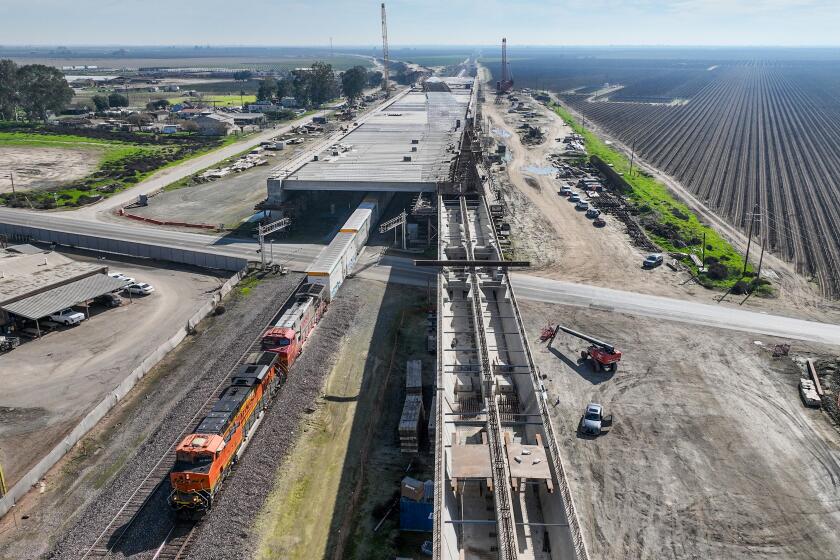Despite seismic concerns, last segment of Los Angeles-to-San Francisco high-speed rail line is cleared environmentally

- Share via
California’s entire high-speed rail route from Los Angeles to San Francisco has officially been environmentally cleared for construction after the High-Speed Rail Authority’s board of directors voted Thursday to certify the final review of the line’s critical Palmdale-to-Burbank segment.
Outgoing CEO Brian Kelly said that when adjusted for inflation, the segment would cost nearly $29 billion.
The 38-mile stretch would connect the Antelope Valley to the San Fernando Valley via a roughly 17-minute trip from the Palmdale Transportation Center to Hollywood Burbank Airport. Trains would run at about 220 mph through four underground tunnels that would pass through the Acton area, Angeles National Forest and San Gabriel Mountains National Monument. The tunnels, extending from about 12 to 13 miles in length, are intended to avoid impacts on communities and the environment.
“Today’s approval is more than a historic milestone — it closes the gap between Los Angeles and San Francisco,” Authority Board Chair Tom Richards said in a statement.
The board of directors’ support clears the plan for a critical environmental review process after the initial proposal received pushback.
Concern over whether the tunnel-heavy line could withstand a major earthquake emerged as a sticking point for some board members after questions raised by Stanford seismic engineering experts who cautioned that tunnels are not “immune from seismic problems” and pointed to examples of derailments in China and Japan.
“All of the routes from Palmdale to Burbank proposed in the [draft environmental review] pass through the mountainous terrain of the San Gabriel Range, which presents geology and seismicity conditions of exceptional difficulty, even for California,” Richard Meehan and Douglas Hamilton wrote to the Rail Authority during the public comment period.
Sarah Wilson, an engineer providing tunneling services to the Authority, said that the proximity to fault lines was considered for the tunnel design and that the scientists’ examples of derailments included conditions that the high-speed rail route would be unlikely to experience.
“These [tunnels] are safely deep in rock. The proximity to faults has been considered and the motions have been accommodated in the tunnel lining designs,” Miller said, adding that in the event of an earthquake and evacuation, “what’s going to be experienced is not going to be nearly as scary as we imagine.”
Wilson said that the design is prepared to handle magnitude 6.7-to-7.3 earthquakes — the maximum experienced at the faults where the routes would cross — based on California Geological Survey data, tunnel depth and the expectation that the state’s earthquake warning system would prompt trains to stop.
Construction has been underway along 119 miles in the Central Valley and the Authority is working to extend that from Merced to Bakersfield. There is no timeline for when construction would start elsewhere along the line, as funding has not been locked down. The entire project is about $100 billion more than what was first proposed years ago.
A planned rail segment between Los Angeles and Anaheim is under environmental review. Approval would mark the clearance for the first phase of the 494-mile route. The second phase includes extensions to San Diego and Sacramento.
More to Read
Sign up for Essential California
The most important California stories and recommendations in your inbox every morning.
You may occasionally receive promotional content from the Los Angeles Times.












